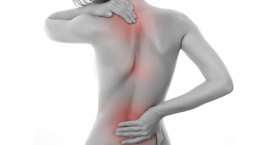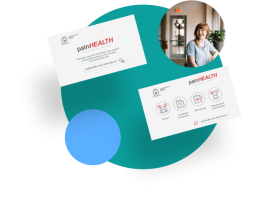Osteoporosis and osteopenia
Learn about osteoporosis and osteopenia, what treatments exist and get helpful tips to inform your musculoskeletal pain co-management plan.
Last updated: 28 Oct 2023 · 4 min read
Osteoporosis and osteopenia are conditions where the bones lose strength and quality, resulting in bones becoming weaker and more susceptible to fracture. In osteopenia, the bones have lost some strength, but not to the same degree as in osteoporosis.
Approximately two-thirds of Australians aged over 50 have osteoporosis or osteopenia.
Osteoporosis and osteopenia are not an inevitable part of ageing; they can be treated and prevented. In Australia, osteoporosis affects 13% of women aged 50-69 years and 43% of women aged 70 years and older1. Bone loss may also occur in men and younger people (e.g. female distance athletes and people with chronic medical conditions). The most common outcome of osteoporosis or osteopenia is a bone break or “fracture”. A fracture (broken bone) usually occurs from a fall or low-load impact. Fractures commonly occur at the hip, pelvis, spine, ribs, arm or wrist. Once you have had one fracture, the risk of sustaining more fractures increases, particularly spinal fractures. Many people experience pain and difficulty doing everyday life activities like work and recreation after a fracture. The good news is that you can get help.
Osteoporosis/osteopenia is usually managed with a combination of medication, exercise and lifestyle modifications, including focusing on optimal nutrition.
What can I do for my Osteoporosis?
There is a lot you can do to manage your bone health and reduce the risk of fractures. See the right care for Osteoporosis fact sheet. Right care includes:
- Weight bearing, resistance exercise at least 3 times per week2-4. This might include a combination of walking, dancing and exercising your body against resistance (eg using weights). It is important to seek guidance from a health professional before commencing high resistance exercise, particularly if you are uncertain how to start and if your bone loss is advanced.
- Adopt a well-balanced diet rich in calcium and protein. Vitamin D, which is produced primarily from exposure to sunlight, is also important for your bone health. Speak with your health professional about safe levels of exposure to sunlight to ensure your vitamin D levels are adequate. Visit Osteoporosis Australia for more information on calcium and vitamin D, including recommended exposure to sunlight. You can also use an online calculator to track your calcium intake.
- Maintain a healthy lifestyle by keeping physically active (e.g. take a daily walk).
- Avoid smoking and excess alcohol (> 2 standard drinks/day).
- Participate in balance training if you feel unsteady or fall over often – ask your health care professional for advice about how to start safe balance exercises.
- Have your vision checked.
- Speak to your GP about a management and monitoring plan for your bone health.
Download our postcard
We've just created a postcard PDF you can download to share with your patients easily.
What about pain and Osteoporosis/osteopenia?
You may or may not experience pain with a diagnosis of osteoporosis. Pain typically occurs with a fracture and may last for several months. Your health professional can guide you in how to manage this acute pain using medicines and other strategies.
Some people continue to experience pain after a fracture has healed. Persistent neck pain, mid-back pain, and lower back pain can be common after a spinal fracture. It is important to talk to your health professional team about your pain and its impact on your function to make sure you are getting the best advice and treatment. Your medical professional may decide to do further imaging or tests to further look at your bones, joints and surrounding muscles. The principles of managing pain associated with osteoporosis/osteopenia are the same as those described throughout our pain management modules. Usually, a combination of strategies are appropriate, tailored to your needs.
Exercise
You may also need more specific exercise and posture training, supports or other interventions to help manage your pain. For example, there are specific exercise guidelines available for people who have sustained osteoporotic spinal fractures5,6, although evidence for the benefits of exercise therapy alone is low7.
You can ask your physiotherapist about these guidelines and they can advise on exercises suitable for your situation. For general guidance about exercise and osteoporosis, see the Too Fit to Fracture recommendations from Osteoporosis Canada.
Vertebroplasty
Vertebroplasty is a procedure that has been used to treat painful spinal fractures due to osteoporosis. The procedure involves injecting medical-grade cement into a fractured vertebra through a needle. The cement hardens in the bone space to stabilise the fracture site.
Recent scientific trials, and a Cochrane Review have concluded that available evidence does not support the use of this procedure for reducing pain or disability or improving quality of life8. Importantly, serious adverse events have been reported. If you are considering this procedure, it is critical that you discuss this current evidence with your doctors.
Want further information?
For more information about osteoporosis/osteopenia and to access community support groups, visit Osteoporosis Australia and the Cochrane Summaries. The Primary Health Network in your area and your state/territory Council of the Ageing (COTA) may also have further information about community-based programmes for osteoporosis.
To check your risk of osteoporosis visit the Osteoporosis Australia Risk Factors website. Alternatively, if you wish to contact a Health Professional, we recommend you seek further assistance.
Movement with pain
Pacing and goal setting
Approaching pain
Osteoporosis: Promoting wise healthcare
Chronic and Non-Cancer pain management plan
Exercise | Prevent Osteoporosis
Calcium | Prevent Osteoporosis
Vitamin D | Prevent Osteoporosis
Medications for Osteoporosis
World Health Organisation - ICOPE Evidence Centre
- Watts JJ, Abimanyi-Ochom J, Sanders KM. Osteoporosis costing all Australians. A new burden of disease analysis 2012-2022. Sydney: Osteoporosis Australia; 2013. [PDF]
- Howe TE, Shea B, Dawson LJ, et al. Exercise for preventing and treating osteoporosis in postmenopausal women. Cochrane Database of Systematic Reviews 2014; 7:CD000333. doi: 10.1002/14651858.CD000333.pub2. [PDF]
- Gianoudis J, Bailey CA, Ebeling PR, et al. Effects of a targeted multimodal exercise program incorporating high-speed power training on falls and fracture risk factors in older adults: a community-based randomized controlled trial. J Bone Miner Res 2014;29:182-91. [PDF]
- World Health Organization. Guidelines on community-level interventions to manage declines in intrinsic capacity. Geneva: WHO; 2017. [Link]
- Giangregorio LM, McGill S, Wark JD, et al. Too Fit To Fracture: outcomes of a Delphi consensus process on physical activity and exercise recommendations for adults with osteoporosis with or without vertebral fractures. Osteoporos Int 2015;26:891-910. [PubMed]
- Giangregorio LM, Papaioannou A, Macintyre NJ, et al. Too Fit To Fracture: exercise recommendations for individuals with osteoporosis or osteoporotic vertebral fracture. Osteoporos Int 2014;25:821-35. [PubMed]
- Gibbs JC, MacIntyre NJ, Ponzano M, et al. Exercise for improving outcomes after osteoporotic vertebral fracture. Cochrane Database of Systematic Reviews 2019; 7: CD008618. doi: 10.1002/14651858.CD008618.pub3. [PDF]
- Buchbinder R, Golmohammadi K, Johnston RV, et al. Percutaneous vertebroplasty for osteoporotic vertebral compression fracture. Cochrane Database of Systematic Reviews 2018; 11: doi: 10.1002/14651858.CD006349.pub4. [PDF]
This module has been developed by Frances Milat, MBBS (Hons); FRACP, MD, Endocrinologist; Head, Metabolic Bone Services, Monash Health; Head, Metabolic Bone Research Group & Michael and Phoebe Jones Research Fellow, Hudson Institute, Melbourne, Australia; and Andrew Briggs, BSc(PT) Hons; PhD; FACP, Professor, School of Physiotherapy and Exercise Science, Curtin University, Perth Australia.
The information in this module is based on current best evidence research and clinical practice.
SHARE THIS ARTICLE
Pain management information, stories and tips accessible anywhere, anytime.
Access clinically supported practical musculoskeletal pain management information to help you understand pain, how you can manage your pain with your management team on the go on any device.

